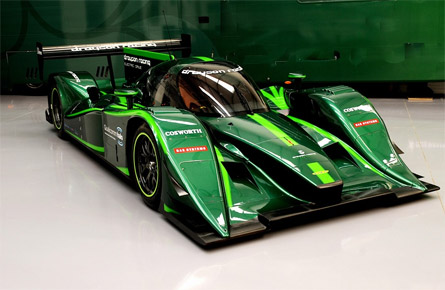BAE Systems is promising a revolution in battery-powered unmanned aircraft and other devices by building power storage directly into structural composite materials.
The "structural batteries" concept began as a bid to lighten the load of soldiers in the field, who carry rucksacks weighing up to 76kg (170lb), much of it electrical and electronic devices.
Whether BAE is justified in claiming the idea is the most radical method of storing electricity since the invention of batteries 200 years ago - and might lead to a redesign of all electrical technology - remains to be seen. But by storing energy in the structure of a device, the need for separate traditional batteries - and their weight and bulk - can almost certainly be reduced.
 |
|---|
© Lola Lola-Drayson B12/69EV Le Mans prototype |
BAE has demonstrated the technology in a torch and, intriguingly, in a micro unmanned air vehicle. One of the most dramatic demonstrations, though, is part of a bid to develop the world's fastest electric racing car. The Lola-Drayson B12/69EV Le Mans prototype is being designed to generate 850hp (630kN) with zero emissions, and BAE's structural batteries will power some onboard systems.
Alex Parfitt, materials technology leader at BAE, said the concept could apply to everything from small gadgets to entire vehicles, and open the way to "more efficient, elegant and lighter designs".
The trick has been to merge battery chemistries into composite materials that can be moulded into complex 3D shapes, plugged in to recharge or allied as solar cells. So far, BAE scientists have achieved energy densities of 25W/kg, just below a standard car battery.
The nickel battery chemistry employed so far is robust and could last decades, said BAE, but there is scope for improvement by using lithium-ion and lithium-polymer chemistries as used in modern consumer electronics.
BAE added that a structural battery has the same tolerance to damage as carbon composite, so it can take a hit and still work. The batteries can also be cellular, so if one or two cells are damaged, others can pick up the slack.
The company said the chemistry is benign and "perfectly safe" in case of damage. "You can also design them to break safely in the same way the structure of car crumple zones are designed," BAE added.
Source: Flight International


























